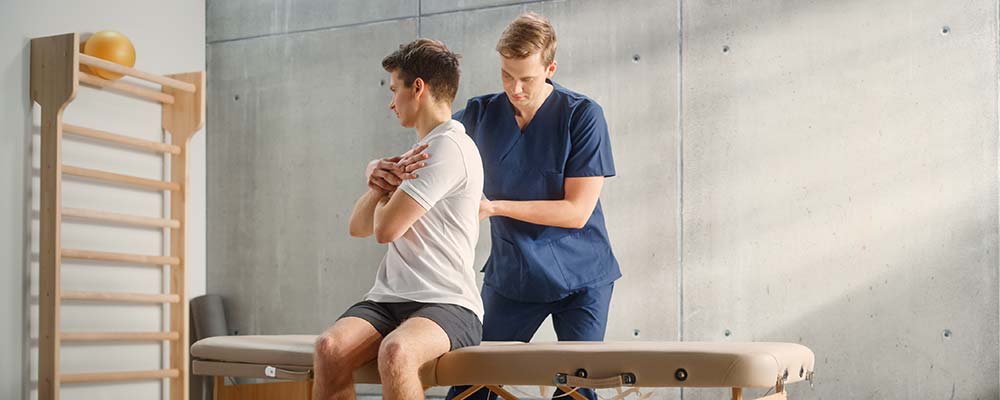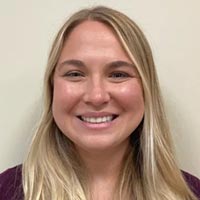Healing Sports Injuries in Jefferson City: Strategies to Regain Movement and Function
Posted On: September 30, 2023 by Lindsay Matijevich

Sports injuries can be devastating, not only for athletes but for anyone who loves to stay active. Whether you’re an amateur or a seasoned athlete in Jefferson City, suffering a sports injury can disrupt your life and limit your mobility.
However, the good news is that with the right strategies and professional guidance, you can regain movement and function, allowing you to get back in the game. In this blog post, we will explore the reasons behind the development of sports injuries, the importance of physical therapy and sports rehab, and other effective strategies to help you on your road to recovery.
Why Did Your Sports Injury Develop?
Understanding the underlying causes of sports injuries is crucial for preventing them in the future. In Jefferson City, sports injuries can occur due to various factors:
Overuse: Many sports injuries are the result of overuse or repetitive stress on certain body parts. Athletes who push themselves too hard or engage in excessive training without adequate rest are at a higher risk.
Poor Technique: Incorrect technique while performing sports activities can lead to injuries. It’s essential to learn proper form and technique to prevent injuries.
Inadequate Warm-Up and Stretching: Skipping warm-up exercises and not stretching properly before physical activities can increase the risk of injuries. Muscles and ligaments need to be prepared for the demands of sports.
Inadequate Conditioning: Inadequate physical conditioning can make your body more vulnerable to injuries. Strengthening and conditioning exercises are essential to build resilience.
Environmental Factors: Sometimes, external factors like the playing surface, weather conditions, or the quality of sports equipment can contribute to sports injuries.
Sports Rehabilitation and Physical Therapy
Physical therapy and sports rehab are vital components of the recovery process for sports injuries. Here’s why they are so important:
Personalized Treatment Plans: Physical therapists in Jefferson City design personalized treatment plans tailored to your specific injury. They consider factors like your age, fitness level, and the nature of your injury to create a plan that works best for you.
Pain Management: Sports injuries often come with pain and discomfort. Physical therapists use various techniques, including manual therapy and modalities like ultrasound or electrical stimulation, to manage pain effectively.
Restoring Range of Motion: Limited range of motion is a common issue after a sports injury. Physical therapists work on improving your flexibility and mobility through targeted exercises and stretches.
Strength and Conditioning: Building strength and conditioning is essential for a successful recovery. Physical therapists guide you through exercises that help you regain muscle strength and prevent future injuries.
Education and Prevention: Physical therapists not only treat your current injury but also educate you on how to prevent similar injuries in the future. They provide valuable insights into proper techniques, warm-up routines, and injury prevention strategies.
Gradual Return to Activity: Physical therapy and sports rehab involve a gradual return to your sport or physical activities. This step-by-step approach ensures that you are fully prepared to re-engage in your favorite activities safely.
Monitoring Progress: Throughout your rehabilitation, physical therapists monitor your progress closely, making necessary adjustments to your treatment plan to optimize results.
Other Effective Strategies for Recovery
While physical therapy and sports rehab play a central role in healing sports injuries, there are additional strategies that can complement your recovery journey:
Rest and Recovery: Rest and recovery are often underestimated aspects of healing from sports injuries, but they play a pivotal role in the rehabilitation process. Injuries, whether minor or severe, require the body’s innate ability to heal itself. Here, we delve into the importance of rest and recovery and explore practical ways to optimize this critical aspect of your healing journey.
Nutrition: Injury recovery places additional demands on your body’s resources. Proper nutrition ensures that your body has the necessary raw materials to repair and regenerate damaged tissues. While recovering from sports injuries you should focus on maintaining a balanced diet. This means incorporating a variety of foods, including lean proteins (chicken, fish, beans), whole grains (brown rice, quinoa), fruits, vegetables, and healthy fats (avocado, nuts).
Hydration: Water is vital for various bodily functions, including those related to injury recovery. Proper hydration is necessary for efficient circulation, which ensures that vital nutrients and oxygen reach the injured tissues. Moreover, hydration supports the removal of waste products and toxins from the body, facilitating the healing process.
Cross-Training: Recovering from a sports injury doesn’t mean you have to put your fitness on hold. Cross-training, which involves engaging in alternative forms of exercise that don’t exacerbate your injury, can help you maintain fitness, prevent deconditioning, and support your overall recovery. In this section, we explore the benefits of cross-training and how to implement it effectively in your rehabilitation plan.
Mental Health Support: Coping with a sports injury can be a mentally challenging experience. The physical pain, the interruption of your usual routine, and the uncertainty of recovery can take a toll on your emotional well-being. Seeking support from a counselor or therapist can be an invaluable resource during this time. In this section, we explore the importance of mental health support and ways to access it in Jefferson City.
Bracing and Supportive Devices: Bracing and supportive devices, when prescribed by your healthcare provider, can be invaluable assets in your journey towards recovering from a sports injury. These devices are meticulously designed to provide support, stability, and protection to the injured area, aiding in the healing process. Let’s delve deeper into the significance of bracing and supportive devices, the types available, and how they can facilitate your rehabilitation.
Medication and Injections: Pain and inflammation often accompany sports injuries, making them a significant source of discomfort and hindrance to the healing process. In consultation with your healthcare provider, certain medications or injections may be prescribed to manage these symptoms effectively. Here, we explore the role of medication and injections in sports injury recovery and how they can be utilized safely and optimally.
Conclusion
In Jefferson City, recovering from a sports injury is a journey that demands commitment, patience, and the appropriate tactics. Understanding the causes of your injury, obtaining expert assistance through physical therapy and sports rehab, and applying extra recovery tactics are all important stages toward restoring movement and function.
Keep in mind that each person’s path is unique, and it’s critical to connect with healthcare specialists who can provide tailored direction and support throughout your recovery process. You may return to doing what you love most, pain-free and stronger than ever before, with the appropriate approach and determination.

